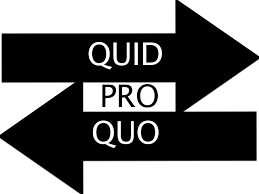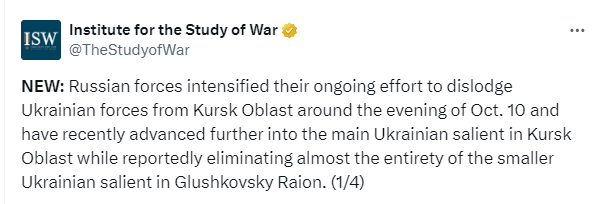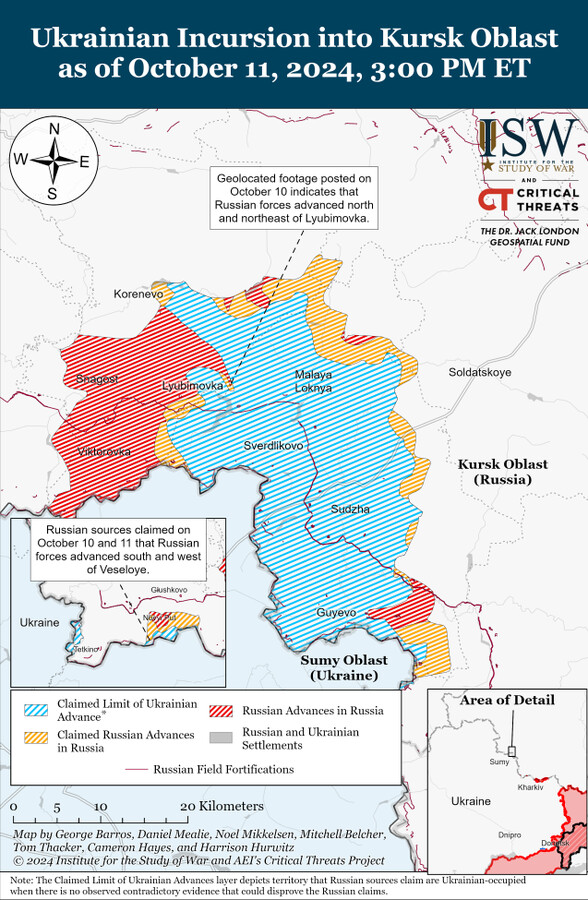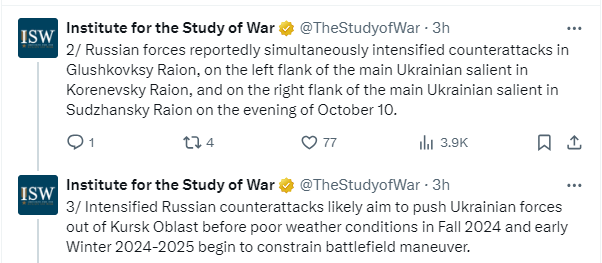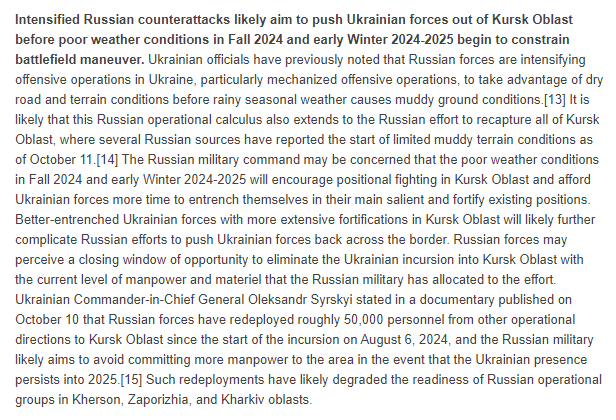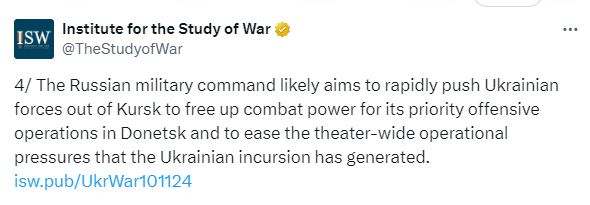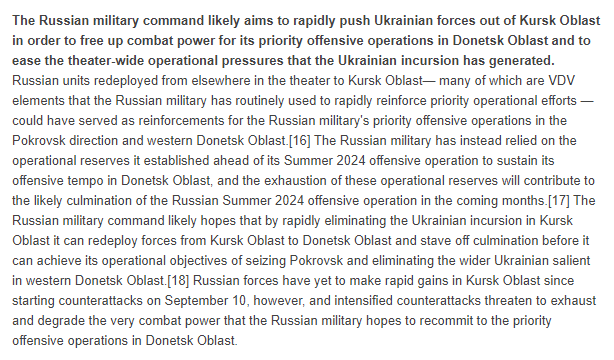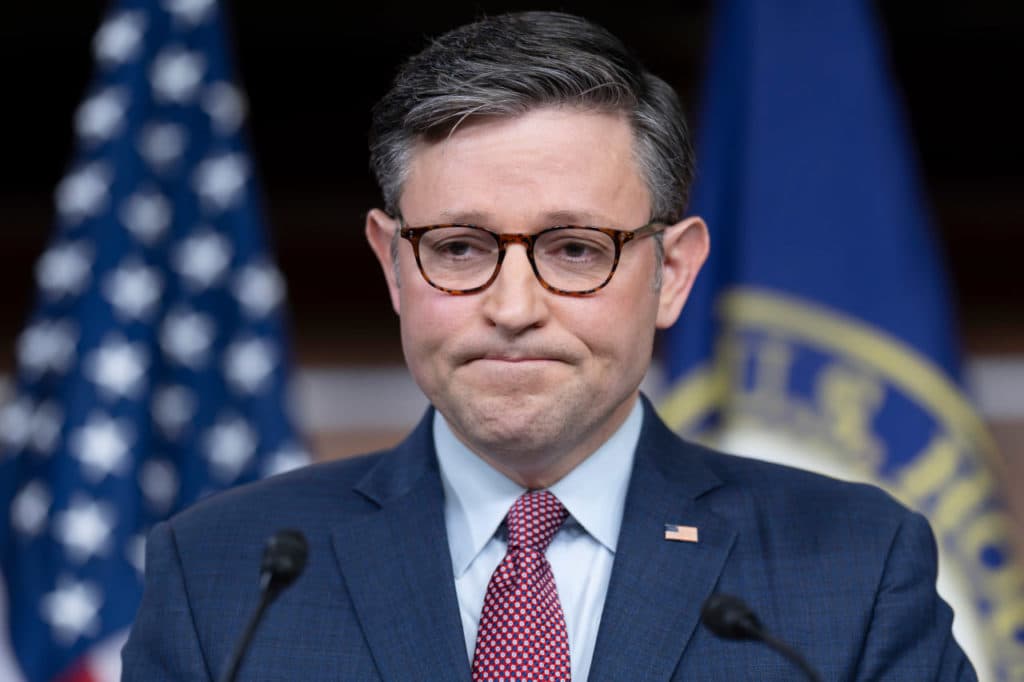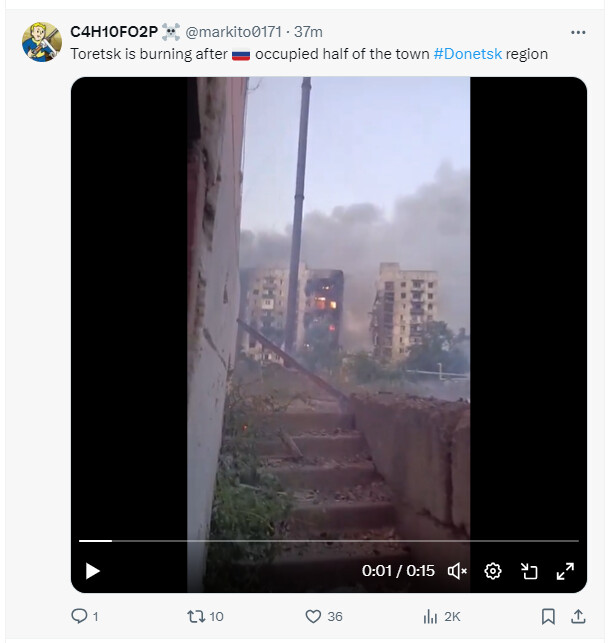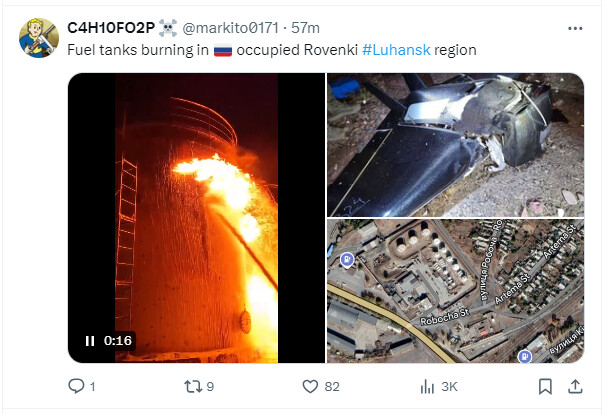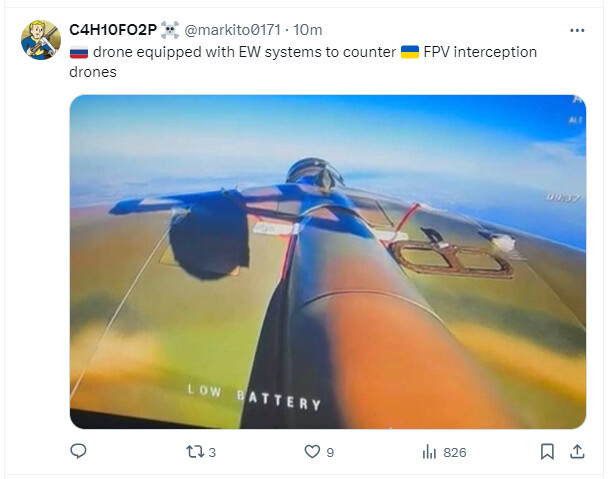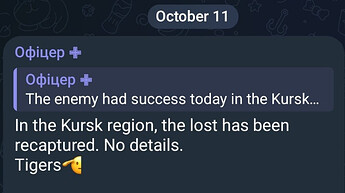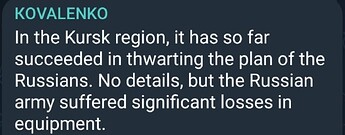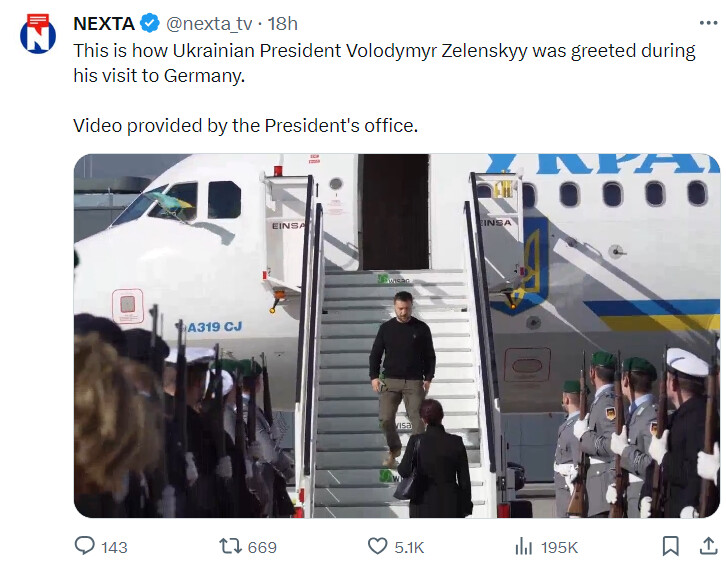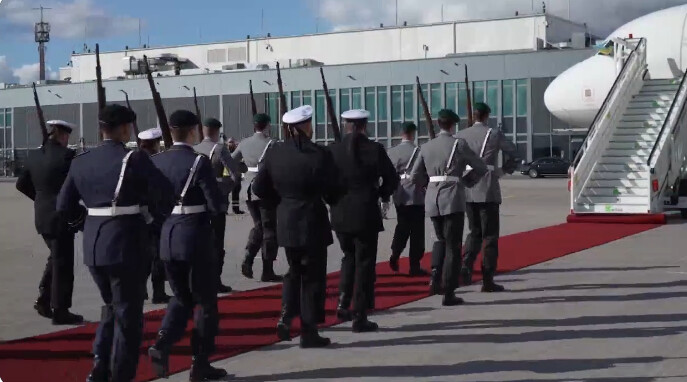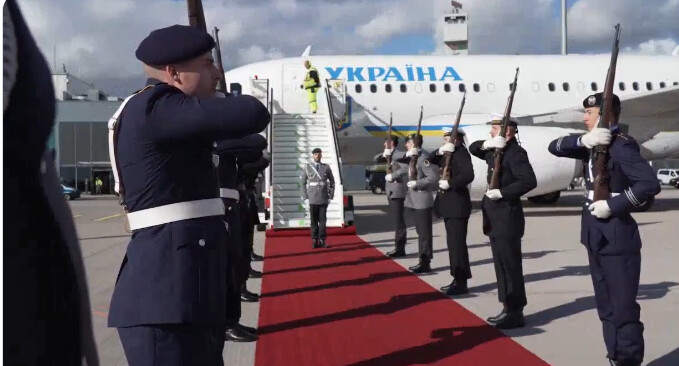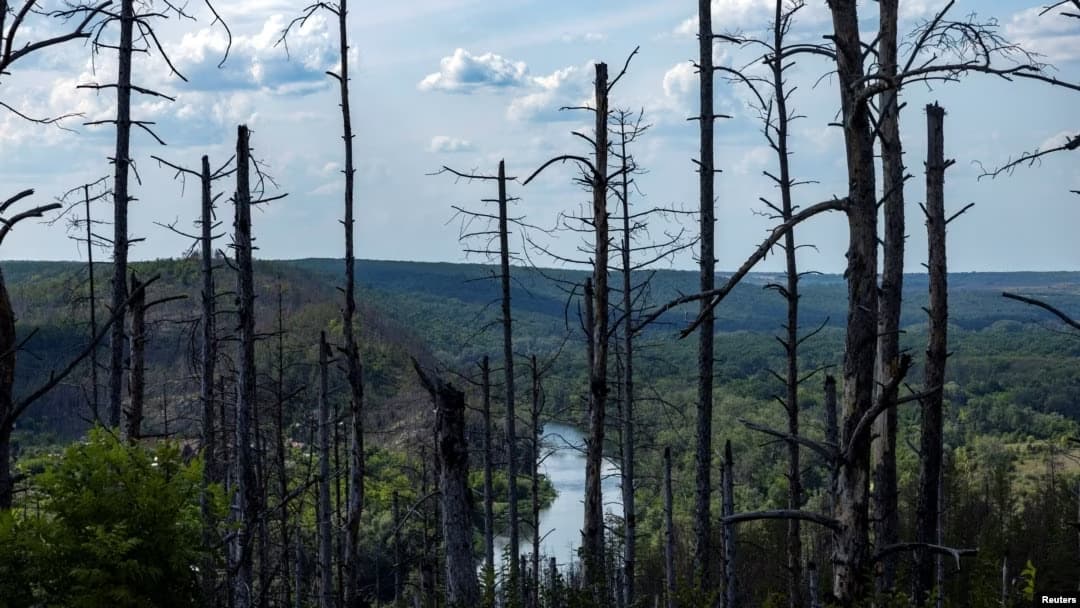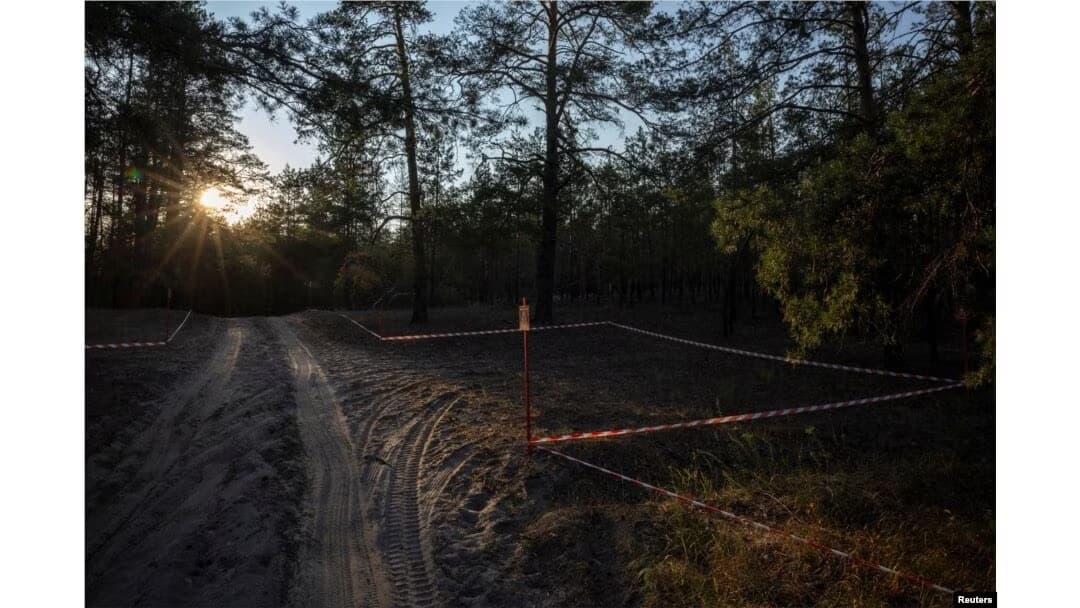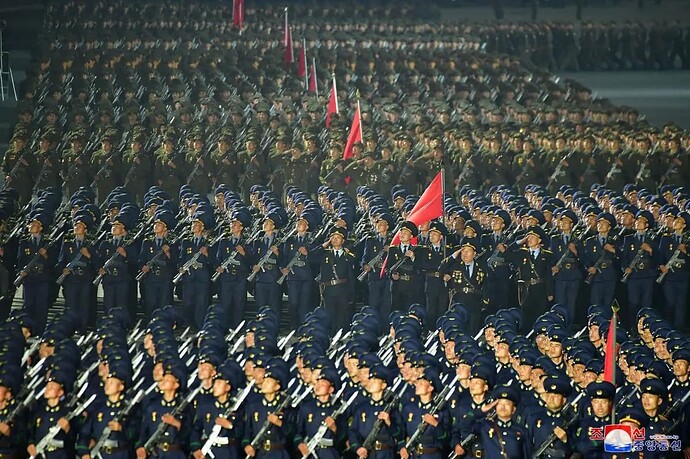Doesn’t make sense that they train the NK troops in Russia when so many reports say their own soldiers get minimal training.
NK troops will probably stop coming if not looked after? Whereas Russians are used to being treated like ■■■■
NK troops will do whatever their “dear leader” tells them to do.
Absolutely they will. I just don’t reckon great leader would want his troops used as cannon fodder for Fark Putin
“Speaker Johnson expresses fatigue over war in Ukraine”.
What a man, fatigued from fighting in the Ukrainian trenches since 2014, slogging it out in mud, dust, snow, heat, flies, rats, lice, bullets, bombs, artillery, drones and constant death. Combating valiantly with gruelling fighting retreats against a superior armed force. Man, he knows what fatigue is. What a guy.
All this, while self indulgent, lazy, cantankerous, chicken-■■■■, slimy western politicians block aid and politically grandstand.
We’re so lucky to have a good sapper like speaker Johnson in the trenches of Ukraine.
“No appetite for further Ukraine funding” House Speaker Johnson expresses fatigue over war in Ukraine
Mike Johnson suggested that the resolution of the Ukraine-Russia war could hinge on the 2024 US presidential election. Johnson suggested that former President Trump could swiftly end the Ukraine-Russia war if re-elected, contrasting this with his view that under a Harris administration, the war would likely continue.
12/10/2024
US House Speaker Mike Johnson. Credit:
In a recent interview, US House Speaker Mike Johnson expressed a diminishing appetite for further funding to support Ukraine’s war effort against Russia, according to Punchbowl News.
Johnson’s evolving stance on Ukraine aid comes at a critical time, with the war showing no signs of abating. Earlier this year, the House Speaker delayed a military aid bill meant for Ukraine by opposing the Senate’s package, which combined aid for Ukraine, Israel, and Taiwan. While he eventually passed the bill with $61 billion support for Ukraine, it weakened Ukraine’s military position and hindered military operations at a critical moment in its war against Russia.
However, Johnson’s current stance appears to be evolving, according to Punchbowl News.
“I don’t have an appetite for further Ukraine funding, and I hope it’s not necessary,” he stated.
Johnson’s views on the conflict’s resolution are tied to the upcoming US presidential election. He expressed belief that a potential Trump presidency could bring the conflict to a swift end.
“If President Trump wins, I believe that he actually can bring that conflict to a close,” he said.
Johnson suggested that Trump might directly engage with Russian President Vladimir Putin to resolve the situation.
In contrast, Johnson expressed concerns about the war’s continuation under a potential Harris administration.
“If Kamala Harris is president, I don’t think it ends, and that’s a desperate and dangerous scenario,” he said.
Republicans for Ukraine, a human rights group, has given Johnson an “F” grade, indicating very low support for Ukraine. His statements have been characterized as anti-Ukrainian by some human rights activists.
Trump has consistently avoided directly supporting Ukraine’s victory in the war. In debates and interviews, when asked if he wants Ukraine to win, Trump focuses on ending the war quickly, often emphasizing that the conflict would be settled within 24 hours if he were president again. He has suggested that he would seek a deal with Russia to end the fighting, without making a clear commitment to Ukraine’s victory.
However, during his latest visit to the US to present Ukrainian victory plan, President Zelenskyy met Trump and claimed that former US President promised support for Ukraine if he were re-elected.
In contrast, Kamala Harris strongly supports Ukraine and has defended the Biden administration’s extensive military assistance to Kyiv. During debates, she accused Trump of being willing to abandon Ukraine, arguing that his quick resolution approach would mean giving in to Russian aggression.
Harris has emphasized the importance of supporting Ukraine with advanced weaponry, such as air defenses and tanks, and views continued US aid as crucial to both Ukraine’s sovereignty and broader European security. She also warns that failing to support Ukraine could embolden Russia to target other countries, like Poland.
Darst I repeat. “Get it India”.
India Becomes Second-Largest Supplier Of Critical Tech To Russia Amid Ukraine War: Report
Oct 12, 2024, 09:42 AM | Updated 09:42 AM IST

India has reportedly emerged as the second-largest supplier of restricted critical technologies to Russia amid Moscow’s ongoing conflict with Ukraine.
India’s exports of restricted technologies, including microchips, circuits, and machine tools, crossed $60 million in April and May, doubling from previous months, and spiked to $95 million by July, according to US and European officials cited in a Bloomberg report.
Only China has exported more to Russia in these categories.
Allies of Ukraine have reportedly said that their diplomats have received little response from Indian officials on the matter.
Recent data indicates that nearly 20 per cent of the sensitive technology reaching Russia’s military-industrial sector has been supplied through India, according to the officials.
The latest figures highlight the challenges the US and its allies have encountered in restricting Russia’s ability to sustain its war effort in Ukraine, more than two years after the invasion began.
With direct exports of many dual-use technologies to Russia prohibited, Moscow has turned to acquiring these items through third-party nations, often utilising intermediaries or subsidiaries of Western firms unaware of the ultimate destination.
A US State Department spokesperson said on Friday that the department will raise concerns again with Indian government representatives and local businesses over this issue.
While attempts to block these supply routes have focused on Turkey and the UAE as major transshipment points, new hubs, including India, Malaysia, and Thailand, have reportedly surfaced.
India’s involvement in these shipments complicates matters further, as US and EU policymakers aim to strengthen ties with Prime Minister Narendra Modi’s government, despite his close relations with Putin.
India has also become one of the largest purchasers of Russian oil, defying efforts by Western allies to limit such sales.
Officials have attributed this shift to Russia’s large reserve of rupees, accumulated from oil transactions with India.
India’s growing role as a transshipment hub has drawn the attention of EU and US sanctions authorities in recent months.
Delegations from these countries have made multiple visits in an attempt to persuade Indian authorities to curb these shipments. Several Indian firms have also faced Western sanctions.
In July, US Deputy Treasury Secretary Wally Adeyemo wrote a letter to senior officials at the Confederation of Indian Industry, cautioning them about the sanctions risks for Indian companies and banks linked to Russia’s military-industrial sector.
Russian losses per 12/10/24 reported by the Ukrainian general staff
+1290 men
+9 tanks
+27 AFVs
+59 artillery systems
+1 MLRS
+110 UAVs
The ■■■■■■■ Russians truly are ‘the scum of the earth’. It appears that human decency has no part to play in Russian society and is not taught as part of the curriculum in their schools. Barbaric bastards.
Fair dinkum, Ukraine pushing their northern borders to the Volga and Volkhov Rivers would be doing the world a favour.
Russia-Ukraine war: Frontline update as of October 12
SAT, OCTOBER 12, 2024 - 09:35
As of October 11, 169 combat engagements were registered in the frontline. Russia intensified its attacks in the Kupiansk sector, reports the General Staff of the Armed Forces of Ukraine.
“The enemy became more active in the Kupiansk sector, 23 attacks took place over the day,” the military wrote.
The defense forces repelled assaults near Petropavlivka, Stepova Novoselivka, Kolisnykivka, Lozova, Kucherivka, Synkivka, Kruhliakivka, Novoosynove, Vyshneve, and Pishchane.
“The largest number of attacks was repelled by the Defense Forces in the Kurakhove sector, 32 enemy attacks were stopped. The occupants were most actively trying to advance in the areas of Kostiantynivka, Katerynivka, and Vodiane,” the statement said.
In addition, the enemy attacked in the areas of Novoselydivka, Maksymilianivka, Izmailivka, Hirnyk, Zoriane, Kurakhove, Zhelanne Druhe, Tsukuryne, Kurakhivka, Antonivka.
Situation in other sectors
In the Kharkiv direction, the enemy made one unsuccessful attempt to storm the area near the village of Tykhe.
In the Lyman direction, the enemy attacked 21 times. They tried to break into the defense near Hrekivka, Novomykhailivka, Terny, Zarichne, Makiivka, Novosadove, Nevske, Bilohorivka, and Katerynivka.
The enemy did not conduct any offensives in the Siversk direction.
In the Kramatorsk direction, the Russian troops unsuccessfully attacked eight times in the areas of Kalynivka, Chasiv Yar, Ivanivske, and Stupochky.
In the Toretsk direction, the enemy launched 15 attacks near Nelipivka, Toretsk and Shcherbynivka. The Ukrainian Armed Forces repelled most of them in the vicinity of Toretsk.
In the Pokrovsk direction, Ukrainian troops stopped 20 assault and offensive actions towards Krutyi Yar, Myroliubivka, Myrnohrad, Lysivka, and Selydove. The highest concentration of enemy attacks was near Selydove and Lysivka.
In the Vremivka direction, the enemy increased pressure and conducted 15 assaults on positions near the towns of Bohoyavlenka, Zolota Nyva, Rivnopil, Novoukrainske, Novodarivka, Levadne, and Olhivske. The enemy was actively using bombers and attack aircraft to attack the area.
The Russian invaders did not conduct any assault operations in the Huliaipole and Orikhiv directions.
The operation in the Kursk region continues. Enemy aircraft continue to hit their villages and towns. Over the past day, Russian aircraft conducted 18 airstrikes with 23 guided bombs on their own territory.
No signs of enemy offensive groups were detected in the directions of the Volyn and Polissia.
On the border with Chernihiv and Sumy regions, the enemy is actively using artillery and aviation in the vicinity of Ukrainian settlements from the territory of Russia.
Russian losses in Ukraine
Over the past day, Russia lost 1290 troops. Also, the Ukrainian Armed Forces neutralized 9 tanks, 27 armored combat vehicles, 59 artillery systems, one MLRS, 110 operational and tactical UAVs, 115 vehicles, and 38 units of special equipment.
Moreover, the aviation, missile forces, and artillery of the Defense Forces struck two enemy command posts, 18 areas of concentration of personnel, weapons, and military equipment, an artillery system at a firing position, an electronic warfare station, and one enemy air defense system.
Deserved reception.
Ukraine’s vast forests devastated in hellscape of war
October 12, 2024 7:46 AM
FILE - Trees that perished in forest fires following heavy fighting are seen in Sviatohirsk, Donetsk region, amid Russia’s attack on Ukraine, July 26, 2024
SVIATI HORY NATIONAL NATURE PARK, UKRAINE —
Serhiy Tsapok surveyed the smoldering ruins of pine trees, blackened stumps as far as the eye could see.
“They’re dead now,” the weary ranger said of the trees he’d nursed for almost two decades. The 41-year-old’s daily route through the Ukrainian forests, once a joy, has become a nightmare.
The fire he fought, caused by a blast of undetermined cause, wiped out three hectares of 80-year-old pine trees at the Sviati Hory National Nature Park in eastern Ukraine, according to officials there. Four-fifths of the park’s nearly 12,000 hectares have been damaged or destroyed by fires or ordnance, they said.
It’s a tiny portion of the damage caused by the war, which has brutalized the landscape of Ukraine and much of its 10 million hectares of forests. Both Russian and Ukrainian armies blast thousands of shells at each other every day, shredding the earth in grinding combat that echoes the trench warfare of World War I.
Reuters spoke to nearly 20 specialists in the field, including forest rangers, ecologists, demining experts and government officials, who provided a detailed picture of the ruin wrought on Ukraine’s forests by the 31-month-old war.
Russian authorities didn’t respond to requests for comment for this article.
A worker carries a shovel he used to dig a firebreak to contain a forest fire near Yarova, Sviati Hory National Nature Park, Donetsk region, amid Russia’s attack on Ukraine, July 29, 2024.
‘Enormous’ loss
The director of the Sviati Hory park, Serhiy Pryimachuk, told Reuters that Russian munitions had burned vast tracts of the area, once a rare and beloved beauty spot in a heavily industrialized region.
“What we have lost is enormous,” he said.
Tending to forests is now a perilous occupation, with mines and unexploded shells hidden in the ground posing the biggest threat.
Ranger Oleksandr Polovynko, 39, nearly lost a foot after stepping on a mine while tending the forest last year. “I crawled back to the car and drove home with one leg,” he recalled. It took him six months to return to work.
All that remains of many forests in eastern Ukraine are fields of stripped, broken trunks. Local wildlife, including deer, boars and woodpeckers, have been badly affected by the loss of habitats, the experts said.
In northern Ukraine’s Chernobyl nature reserve, the pre-war population of over 100 Przewalski’s horses - a globally endangered species of wild horse - has been hit hard by the conflict, according to Oleh Lystopad, an ecologist with the ANTS advocacy group who said landmines were making it difficult to extinguish fires.
“Right now, it’s in question to what extent this species can continue to exist there,” Lystopad said.
Bleak legacy
The damage to forests is part of a broader trail of environmental destruction caused by the war, which could leave a bleak natural legacy for decades to come, having poisoned the soil and rivers, polluted the air and left vast tracts of the country riddled with mines, according to the experts.
The dense pine forests common to eastern Ukraine catch alight easily and have been decimated by the conflict, said Brian Milakovsky, a U.S.-based forester who until recently lived and worked in Ukraine for eight years.
The war has torn through the habitats of some unique flora such as the chalk pine, a rare subspecies of Scots pine, according to ecologists and park officials.
Milakovsky said the environmental crisis was particularly acute in Russian-held areas - nearly a fifth of Ukraine - where occupation authorities appeared to have little capacity to extinguish forest fires. He estimated about 80% of the pine forests in the eastern region of Luhansk had been destroyed.
About 425,000 hectares of forest across the country have been contaminated by mines and unexploded ordnance, according to the environment ministry.
Tape warns of mines in the Sviati Hory National Nature Park, Donetsk region, amid Russia’s attack on Ukraine, July 26, 2024. Authorities say they still need to inspect 3 million hectares of forest that are likely riddled with mines and ordnance.
Authorities say they still need to inspect up to 3 million hectares of forest that are or have been occupied by Russian forces and are likely riddled with mines and ordnance. The foresters interviewed said the Russians were heavily dug in and left booby traps and tripwires behind as they retreated.
“If we want to extinguish a fire quickly, it’s impossible because the entire territory is mined,” Ruslan Strilets, who was Ukraine’s environment minister when he was interviewed in July. “There is a risk of being killed or maimed.”
Indeed, on top of serious injuries to rangers like Polovynko, 14 forest workers have been killed by landmines, booby traps or shelling during the conflict, according to environment ministry data.
Decades of work, billions of dollars
The specialists interviewed said repairing the damage to the forests would take decades and cost billions of dollars. Some doubted whether some heavily mined areas of forest would ever be cleared, citing past examples of forests declared no-go zones after previous European wars.
The official estimate is that demining all contaminated territory, including forests and other areas such as agricultural land, will take 70 years, Strilets, who has since been replaced as environment minister, told Reuters in Kyiv on July 22.
Four ecologists with expertise in Ukrainian forests said the subsequent process of regenerating damaged areas would be complex and could take decades, plus billions of dollars of investment.
According to a June 2024 study on the Ukraine war’s carbon emissions, conflict-related forest fires directly emitted greenhouse gases equivalent to 6.75 million metric tons of carbon dioxide, the equivalent of the annual emissions of Armenia. Ukraine has also lost the carbon capture potential of those burned trees.
The World Bank estimated in February that the damage wrought by the war on forests and other protected natural areas, including marshes and wetlands, exceeded $30 billion.
Wouldn’t be training. Be straight to the front.
arms to boots on the ground in Ukraine
N Korea first foreign government to send uniformed troops to Ukraine battlefield, providing an allied boost to Russia’s depleted forces
OCTOBER 12, 2024
North Korea has deployed armed forces to Ukraine. Photo: KCNA via KNS
North Korea is deepening its involvement in the Ukraine war, with military engineers now aiding Russia in targeting Ukraine with ballistic missiles, according to senior officials in Ukraine and South Korea quoted in a The War Zone report.
North Korean troops, including officers, have been deployed alongside Russian forces, marking the first instance of a foreign government sending uniformed troops to support Russia’s invasion. NATO nations are known to have sent military “advisors” to the Ukraine side.
The War Zone report states that North Korea benefits by testing its weaponry and gaining real-world, high-intensity combat experience. Ukraine has responded in kind by targeting North Korean ammunition depots in Russia.
Declassified US intelligence reports indicate that Russia has used North Korean short-range ballistic missiles (SRBMs), including the KN-23 and KN-24, in attacks targeting Ukraine’s critical infrastructure. Since the war erupted in February 2022, North Korea has reportedly provided over a million artillery rounds to Russia.
North Korea’s support may stem from a belief that a Russian victory would set a precedent for lifting US and UN sanctions. The punitive measures have forced North Korea to rely heavily on China for its economic survival, undermining its strategic autonomy.
As North Korea has intensified its involvement by deploying troops to the war, Ukraine has retaliated by targeting these forces and disrupting supply lines.
In a Politico article this month, Ketrin Jochecova mentions that South Korea’s defense minister, Kim Yong-Hyun, confirmed reports of North Korean casualties in Ukraine, indicating that Ukrainian forces have killed North Korea’s soldiers.
While North Korea’s military personnel numbers in Ukraine are difficult to ascertain, a June 2024 The Telegram article notes that, in line with a mutual defense pact signed that month, North Korea planned to send three of its ten engineering brigades as part of an agreement under which Russia will pay North Korea US$115 million annually. North Korea may thus have as many as 15,000 soldiers in Ukraine.
In response to North Korea’s boots on the ground in Ukraine, Ellie Cook and John Feng mention in a Newsweek article this month that Ukraine has intensified its targeting of Russian ammunition depots, focusing in particular on those supplied by North Korea.
Cook and Feng note that since late summer, Ukraine has struck several vital sites, including a large depot in Sergeevka, Voronezh and another in Soldatskoye, destroying munitions provided by North Korea.
Further, they say that in mid-September Ukraine targeted a depot in Mariupol, followed by hits on storage sites in Tikhoretsk and Karachev, both of which housed North Korean supplies.
Cook and Feng note that the Main Directorate of Intelligence of the Ministry of Defence of Ukraine (GUR) has been instrumental in these operations, aiming to disrupt Russia’s logistics and reduce its artillery capabilities.
However, they point out that Ukraine remains frustrated by Western allies’ reluctance to approve long-range-strike weapons, which could further enhance its ability to hit deep inside Russian territory.
While Ukraine intensifies its missile strikes on depots filled with North Korean munitions, NATO’s ongoing reluctance to provide long-range weapons and the ever-present threat of Russian nuclear weapons complicates Ukraine’s bid for a decisive victory under its “Victory Plan.”
In September 2024, RBC-Ukraine reported that Ukraine’s Victory Plan, as outlined by Mykhailo Podolyak, advisor to the head of Ukraine’s Presidential Office, is a strategic blueprint for modern warfare against Russia.
While the plan’s specifics remain vague, Podolyak emphasized that it was not a mere proposal but a clear understanding of the necessary military tools, quantities and costs to conclude the war effectively. He stressed the importance of international support, urging partners to stop fearing Russia’s propaganda about nuclear red lines and escalation.
RBC-Ukraine states that President Volodymyr Zelensky intends to present the plan to US President Joe Biden to clarify whether Ukraine’s allies are committed to a Ukrainian victory or merely to contain Russian President Vladimir Putin’s aggression.
Podolyak warned that the cost of war with Russia would escalate if not addressed promptly, advocating for a principled decision to support Ukraine fully. The report says the plan underscores the need for a unified and resolute stance against Russian aggression to ensure a fair and lasting resolution.
As for NATO’s position on the Ukraine war, in a Politico article this month, former NATO Secretary-General Jens Stoltenberg reflected on the alliance’s cautious stance regarding providing long-range munitions to Ukraine for strikes deep inside Russian territory.
Stoltenberg emphasized that while NATO allies have delivered unprecedented support to Ukraine, including High Mobility Artillery Rocket Systems (HIMARS), cruise missiles and advanced battle tanks, there remains a significant debate over the use of these weapons on Russian soil.
He says NATO aims to uphold Ukraine’s right to self-defense, including targeting legitimate military sites in Russia. However, he points out that there are varying stances within NATO, with some members imposing restrictions to prevent further escalation.
He stresses that it is crucial to avoid self-fulfilling prophecies and ensure ongoing US support for Ukraine, irrespective of the upcoming US presidential election outcome.
Reuters reported in September 2024 that Putin had announced significant changes to Russia’s nuclear doctrine, emphasizing that any conventional attack on Russia, supported by nuclear power, would be considered a joint nuclear assault.
The report says that this shift, revealed during a UN Security Council meeting, broadens the conditions under which Russia might deploy nuclear weapons.
Reuters notes that Russia’s 2020 doctrine allowed for a nuclear response only if the state faced existential threats from nuclear or conventional attacks.
However, it points out that the updated policy now includes aggression against Russia or its ally Belarus, even with conventional weapons, as grounds for a nuclear response.
As per the report, Putin highlighted that these amendments are a reaction to deliberations in the US and UK about enabling Ukraine to strike Russia with Western missiles.
Apart from threatening the use of nuclear weapons, Russia may choose to escalate in other ways. Reuters reported in September 2024 that Russia is considering sending advanced P-800 Oniks anti-ship missiles to Houthi rebels in Yemen, with Iran acting as a broker.
Reuters notes that while the missiles would significantly enhance the Houthis’ capability to threaten commercial and military vessels in the Red Sea, Russia has not yet decided to make the transfer.
